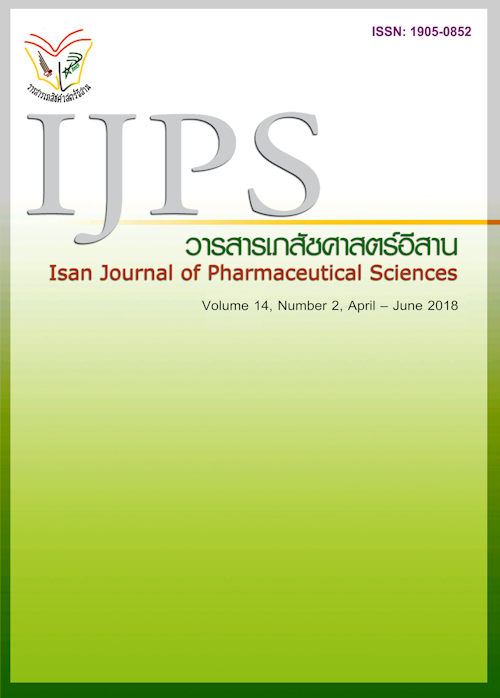Assessment of Rationale Use of Anti-Osteoporosis Drugs at a University Hospital
Main Article Content
Abstract
Prescribing of anti-osteoporosis drugs for patients under the civil servant medical benefit scheme (CSMBS) in public hospitals must be followed the recommendation on drug use indicator for high cost non-essential drug belonged to the Subcommittee for Determining the Practice Guideline, Drug Use Indicator, Diagnosis and Medical Treatment 2013 to encourage the rational drug use and control drug cost. This study aimed to assess the rationality of non-essential drug (NED) prescribing in anti-osteoporosis group. Methods: This retrospective study was studied by gathering the information about the indication for prescribing anti-osteoporosis drugs from the electronic database and from the medical records of the out-patients with CSMBS at Srinagarind Hospital between August 1st and September 30th, 2014. Data were analyzed by descriptive statistics. Results: There were 463 patients recruited into the study. Patients were mainly female (94.2%) and aged over 65 years (70.2%). The top three most prescribed drugs were alendronate plus cholecalciferol, followed by risedronate and ibandronate (41.7, 22.9 and 11.0%, respectively). Prescribing was rationale and irrational in 56.4% and 25.7%, respectively; meanwhile, the rationality could not be assessed in 17.9% because of data lacking in the outpatient medical record. Conclusions: Fifty-six percent of prescribing of anti-osteoporosis drugs were rationale according to the recommendation on indication for high cost NED.
Article Details
In the case that some parts are used by others The author must Confirm that obtaining permission to use some of the original authors. And must attach evidence That the permission has been included
References
Bonnick SL. Osteoporosis in men and women. Clin Cornerstone 2006; 8: 28-39.
Comptroller General’s Department. Measures to promote and regulate the use of reasonable drug of hospital under the Ministry of Public Health [online] 2010 [cited 2013 Feb 18]. Available from: http://www.hisro.or.th/main/download/Handout_3_240755.pdf.
Kungswon P, Waleekhachonloet O, Limwattananon C, Sakolchai S. Drug use review of bisphosphonates and raloxifene for osteoporosis treatment at the postmenopausal clinic, health promoting hospital, Regional Health Promotion Center 6. Isan J Pharm Sci 2008; 4(2): 46-56.
Limwattananon C, Thammatacharee N, Waleekhachonloet O, Thamwanna P, Limwattananon S, Srithamrongsawat S. Expenditure of civil servant medical benefit scheme and the use of non-essential medicines. J Health Syst Res 2011; 5(2): 149-59.
Methadilokul O, editor. Recommendation on indication for high cost non-essential drug [online] 2013 [cite 2013 Feb 18]. Available from: http://www.dms.moph.go.th/dmsweb/rspaper/01.pdf
National Drug System Development Committee. National List of Essential Medicines [online] 2013 [cited 2013 September 1]. Available from: http://apps.who.int/medicinedocs/documents/s23176en/s23176en.pdf
Songsung C, Pattaranit R, Chantachum V. Impact on hospitals under direct payment system for medical expenses: Case study of Srinagarind Hospital Srinagarind Med J 2007; 22(suppl): 162-3.
Soontornpas C, Limwattananon C, Thiamkao S, Soontornpas R. Physicians’ attitude toward non-essential drug prescription criteria measure. Isan J Pharm Science 2015; 11(suppl): 108-11.
Soontornpas C, Limwattananon C, Tiamkao S, Soontornpas R. Implememtation of internal audit system on non-essential drug prescribing at Srinagarind Hospital. Srinagarind Med J 2014; 29(suppl): 150-3.
Soontornpas C, Soontornpas R, Panomu-patham Y, Pongchaiyakul C. Monitoring of implement of non-essential drug prescribing criteria measure in case of anti-osteoporosis drugs. Srinagarind Med J 2016; 31(suppl): 102-4.
World Health Organization. Promoting rational use of medicines: core components. Geneva: WHO; [online] 2002. [cite 2013 Feb 18]. http://archives.who.int/tbs/rational/h3011e.pdf


